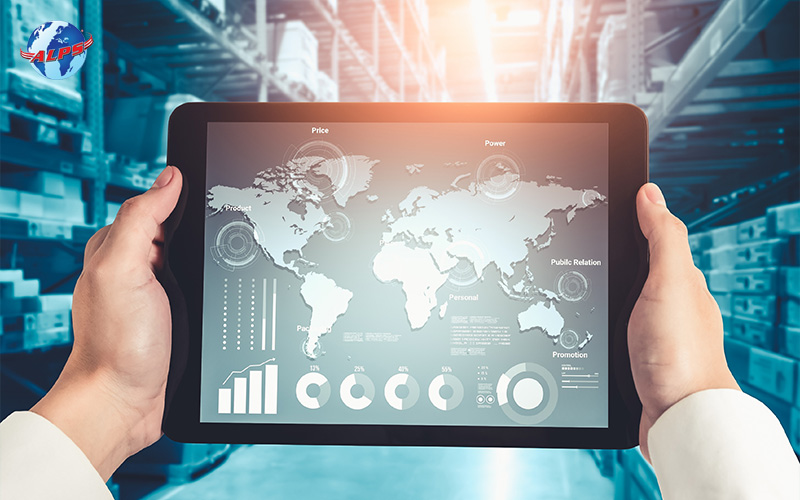Key Takeaways
- Automation in freight services: Improves operational efficiency through robotics, automated sorting, and emerging driverless technologies.
- Real-time tracking technologies: Enhance shipment visibility and transparency using GPS and IoT-enabled sensors.
- AI-powered route optimisation: Uses real-time data to predict delays, reduce costs, and streamline decision-making.
Freight services and logistics have always been the backbone of global trade, and in a logistics hub like Singapore, efficiency is non-negotiable. As customer expectations for speed, transparency, and accuracy continue to grow, the industry is undergoing a profound shift. This transformation is driven by one key force: technological advancement.
From smart warehouses to predictive delivery systems, digital tools are no longer optional add-ons—they are the foundation of modern freight operations. Let’s explore how modern technologies are reshaping freight services and preparing the industry for the future.
1. Automation in Freight Services: Streamlining Operations
The first major wave of technological advancement in air freight and sea freight has come in the form of automation. Across warehouses, robotics are now handling tasks like picking, packing, and sorting. These machines operate with impressive precision and speed, reducing human error and enabling round-the-clock operations.
Automated sorting systems, for instance, can process thousands of parcels per hour, a scale that’s impossible to match with manual labour. Meanwhile, the introduction of autonomous delivery vehicles and driverless trucks is beginning to show real promise. Though still in pilot stages in some regions, these vehicles have the potential to transform long-haul logistics by cutting down transit time and reducing dependence on driver availability.
In Singapore’s fast-paced logistics environment, such automation helps companies do more with less, maximising warehouse space, optimising manpower, and improving throughput, all thanks to technological advancement.
2. The Power of Real-Time Tracking in Freight Logistics
While automation improves what happens behind the scenes, real-time tracking revolutionises the customer experience. Thanks to GPS technology and IoT-enabled sensors, freight companies can now monitor shipments at every step of the journey.
This visibility is not just about knowing where a package is, it’s about enabling smarter decisions. Businesses can reroute deliveries, alert customers of delays, and ensure sensitive goods like pharmaceuticals or electronics are transported in the right conditions. IoT sensors can track temperature, humidity, and shock impact, sending real-time alerts if thresholds are exceeded.
Such transparency builds trust with customers and empowers logistics managers to respond quickly to disruptions. In an era of global supply chain volatility, this level of control is only possible through continued technological advancement.
3. AI and Machine Learning in Route Optimisation and Decision-Making
But knowing where a shipment is isn’t enough—companies also need to ensure it gets there in the most efficient way. That’s where AI and machine learning come in.
By analysing real-time data such as weather, traffic, road closures, and delivery urgency, AI systems can generate optimal routes on the fly. This means faster deliveries, reduced fuel consumption, and fewer missed time slots. Predictive models also allow for more accurate delivery estimates, improving planning and customer satisfaction.
For freight shipping providers, especially those navigating Singapore’s dense urban logistics, AI-driven route optimisation is no longer a luxury, it’s a competitive necessity born from technological advancement.
4. The Future of Freight Services: Integration of Advanced Technologies
So, what’s next? The future of freight lies in deeper integration of emerging technologies. Blockchain is set to revolutionise documentation and traceability with tamper-proof digital records. Drone deliveries, while still experimental, may soon provide swift, last-mile solutions in congested or remote areas.
Even augmented reality (AR) is making its way into logistics, enabling workers to visualise inventory locations and streamline warehouse layouts in real-time. These innovations promise to take freight services beyond automation and tracking, creating an ecosystem where every part of the supply chain is connected and optimised.
The freight and logistics landscape is being reshaped by continuous technological advancement, from warehouse automation to real-time tracking and AI-powered optimisation. These innovations are not just enhancing operational efficiency; they are setting new industry standards for speed, visibility, and reliability. As Singapore strengthens its role as a global logistics hub, staying ahead of these changes is crucial for businesses aiming to thrive in a competitive supply chain ecosystem.
At ALPS Global Logistics, we don’t just adapt to change—we drive it. By integrating modern technology into every stage of the freight journey, we ensure your cargo moves smarter, faster, and with complete transparency. Partner with ALPS Global Logistics and experience the future of freight today.
Contact us now to know more.












